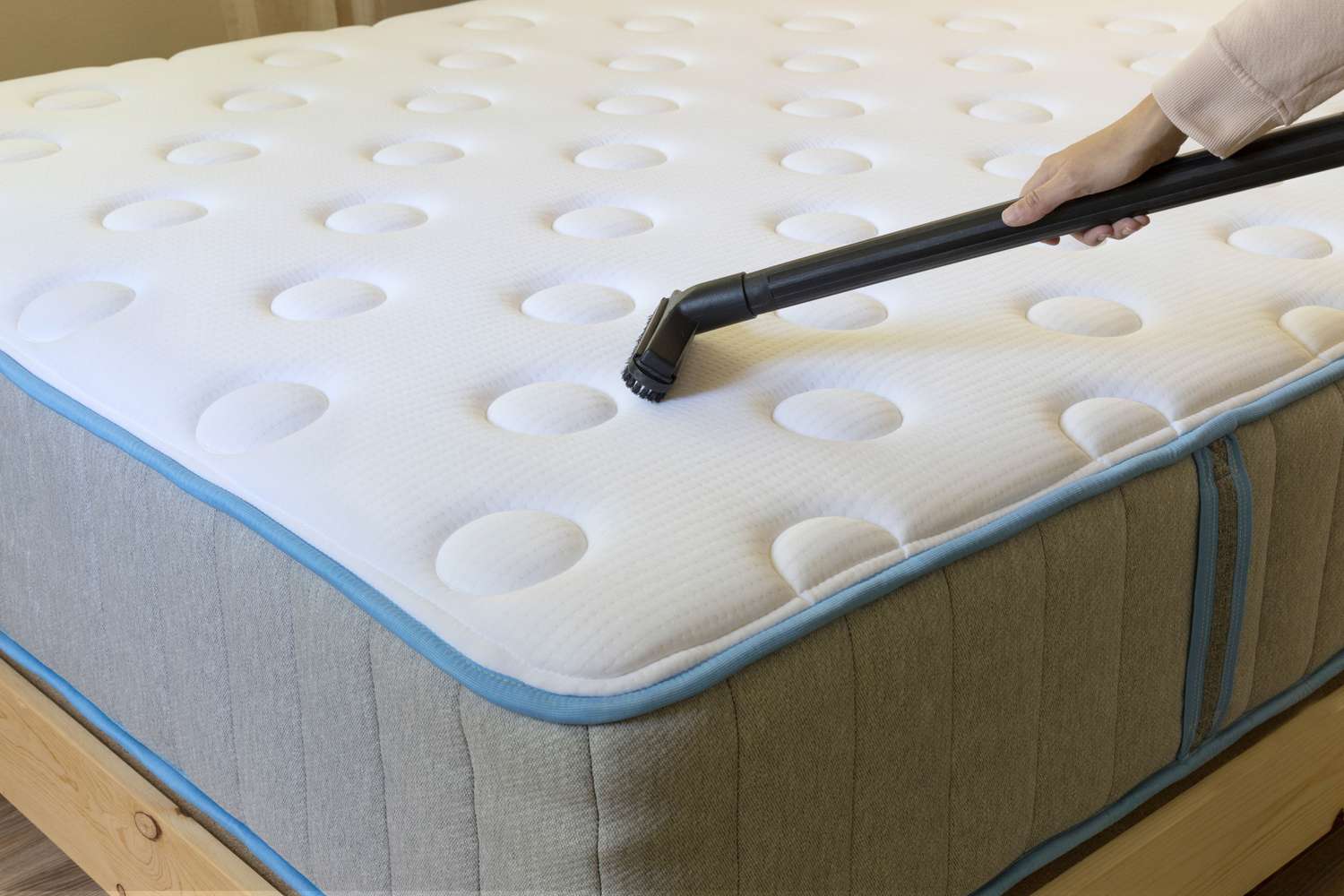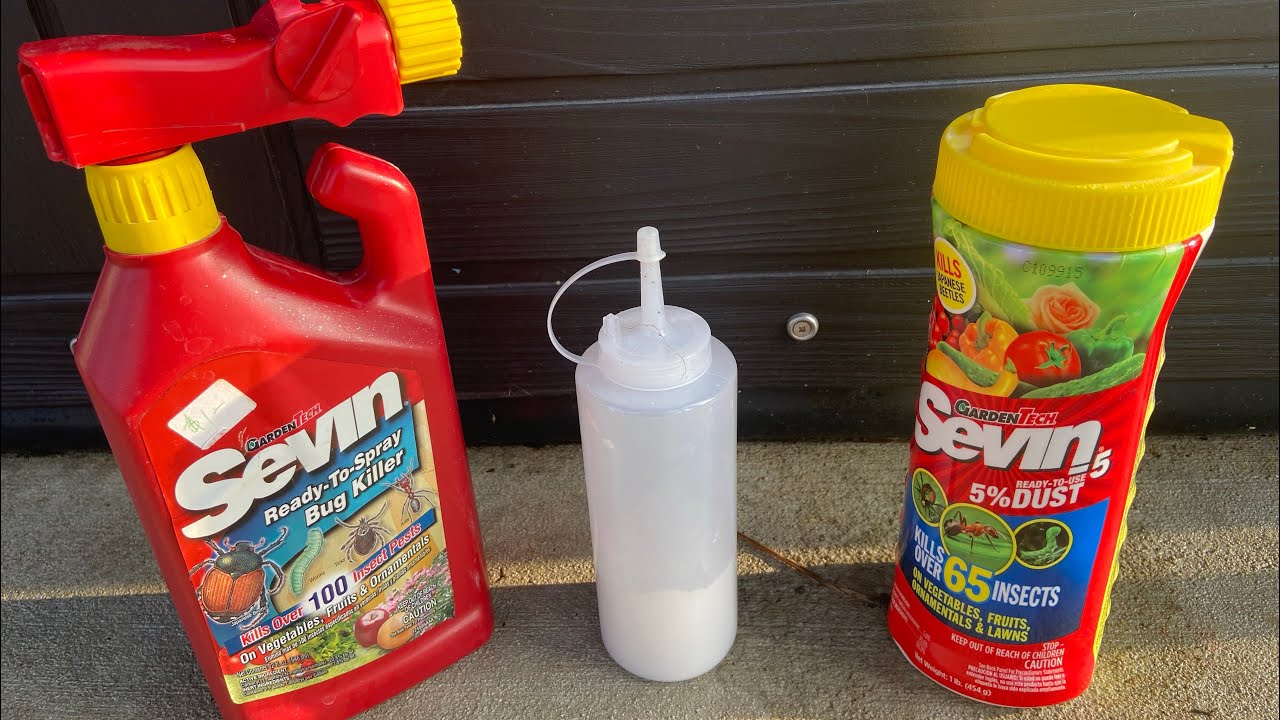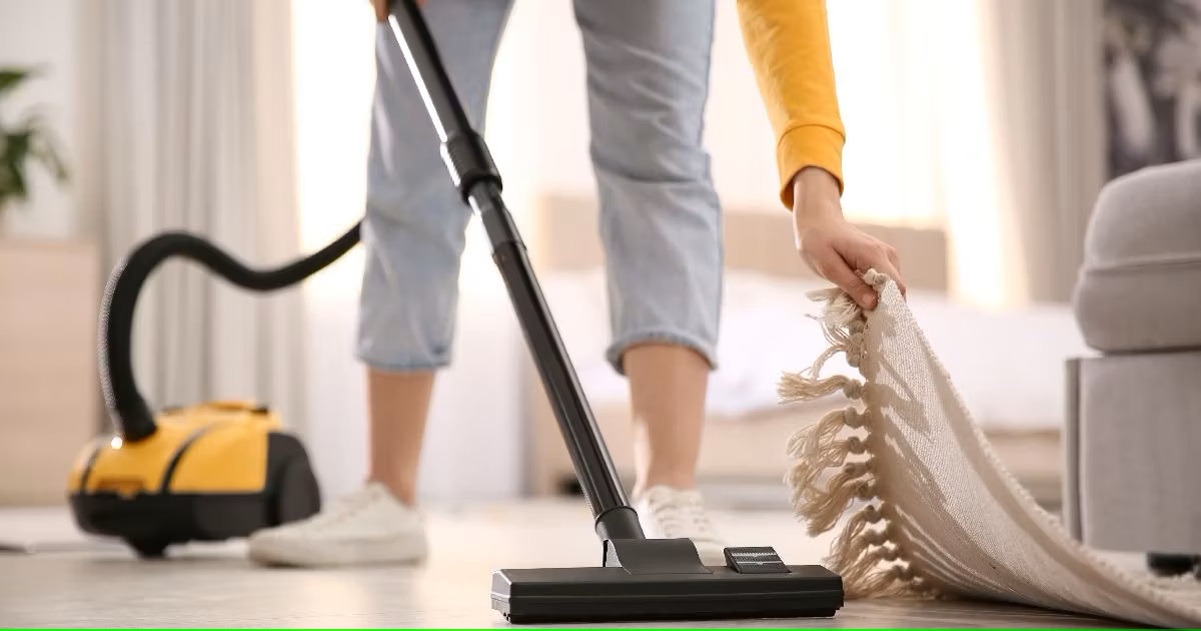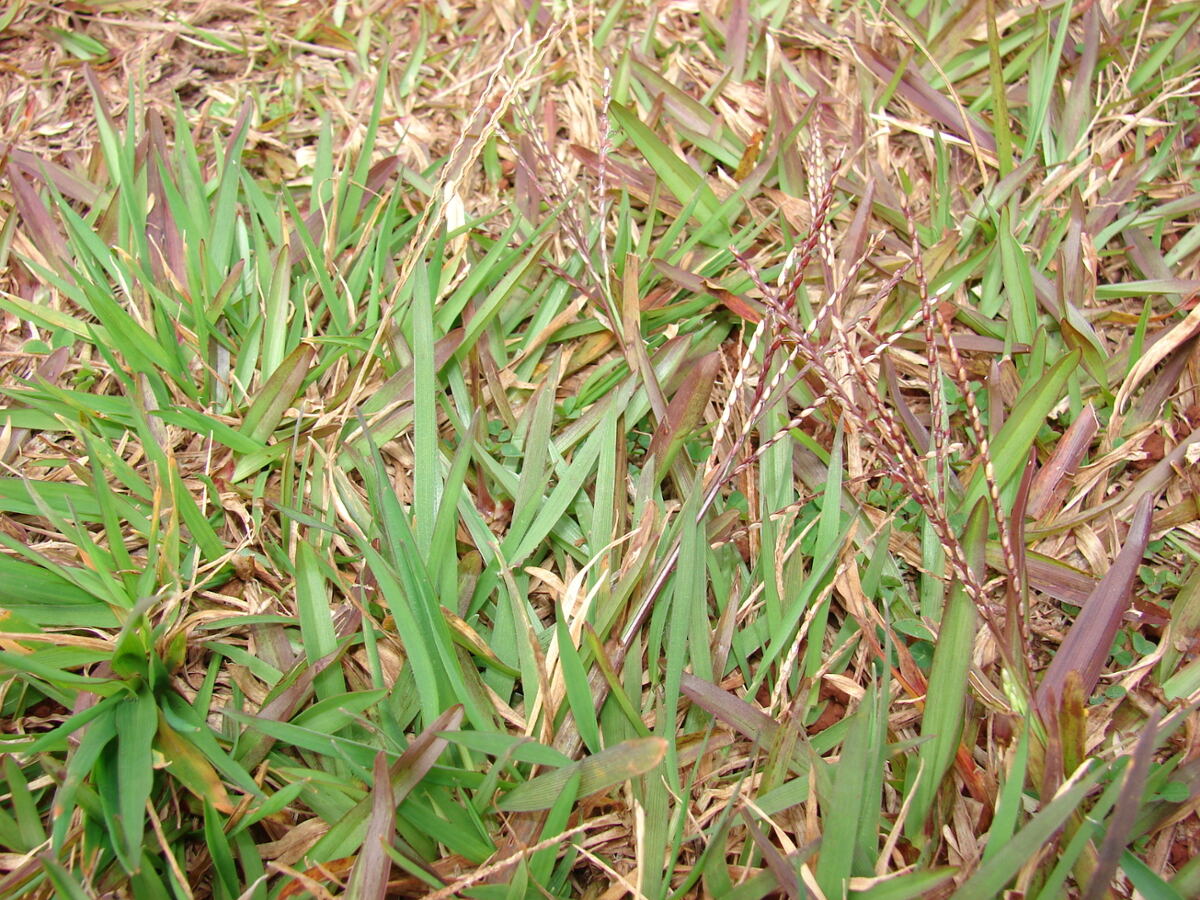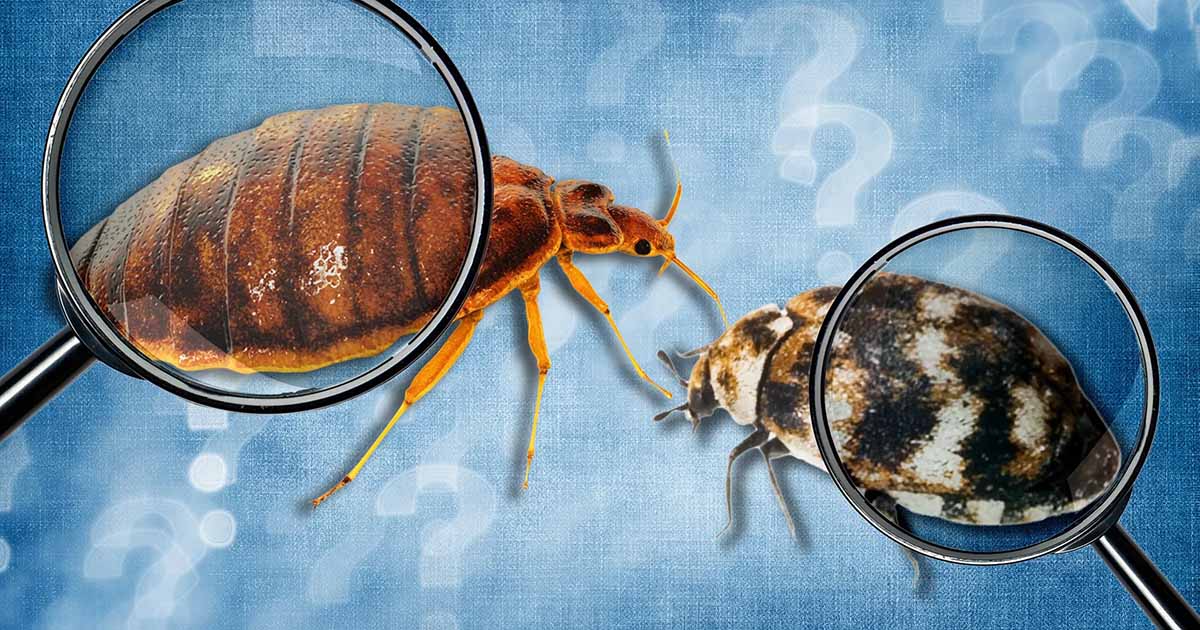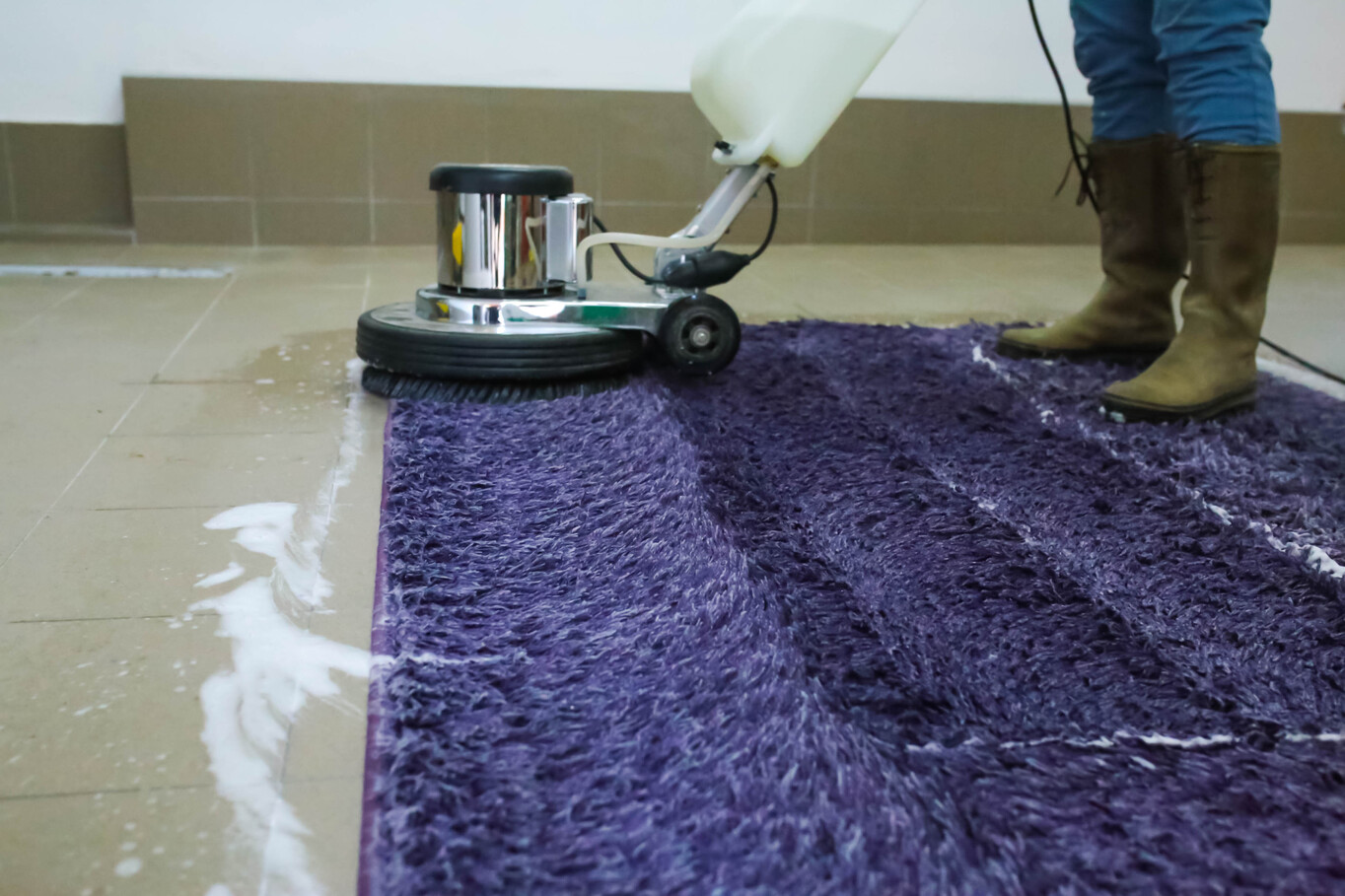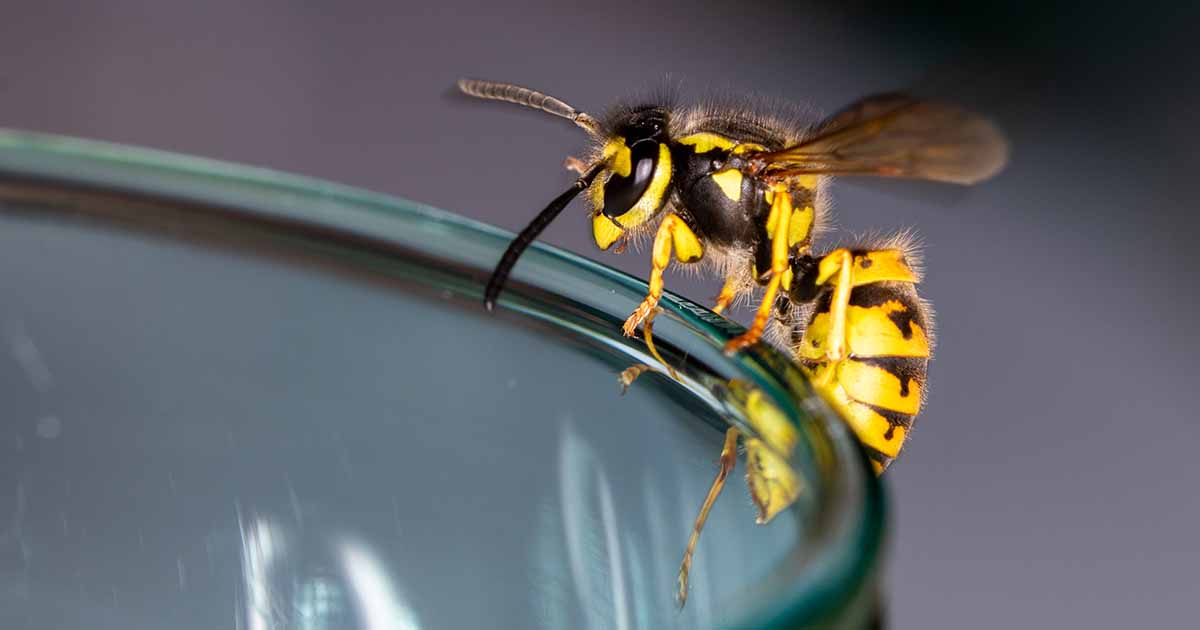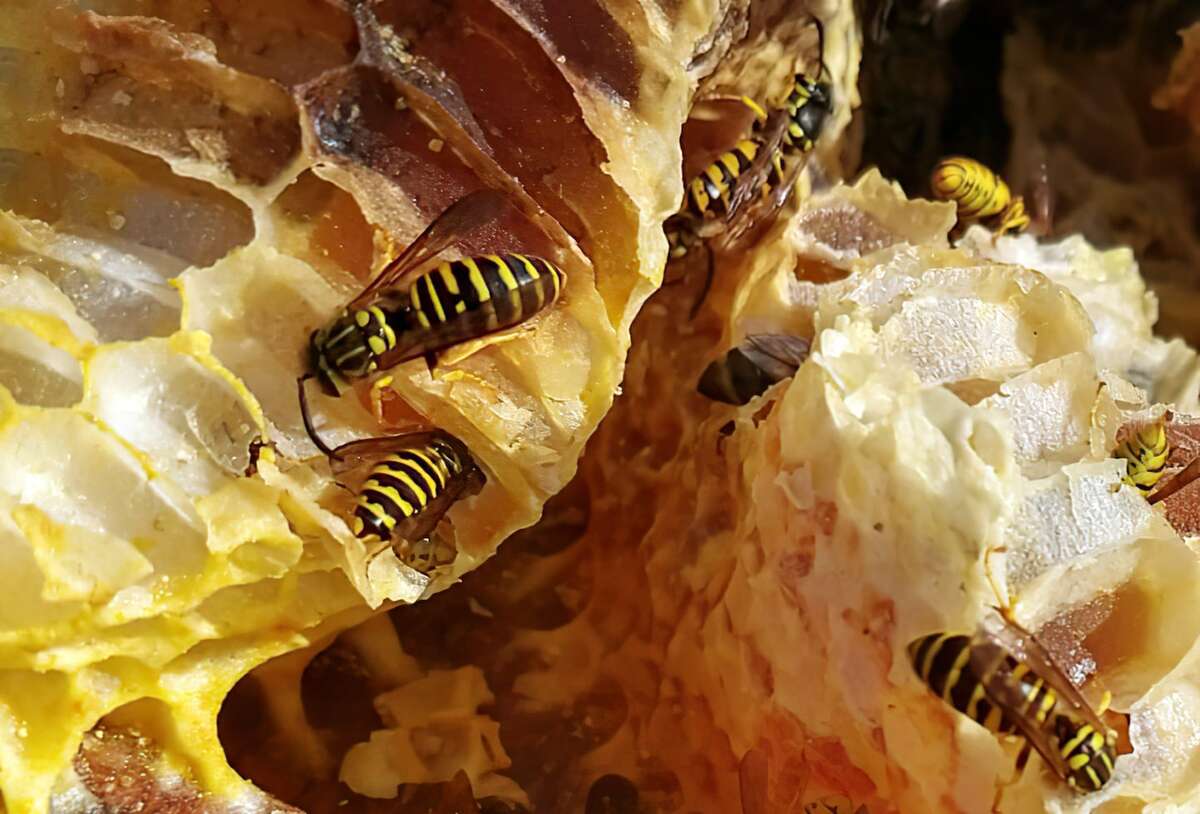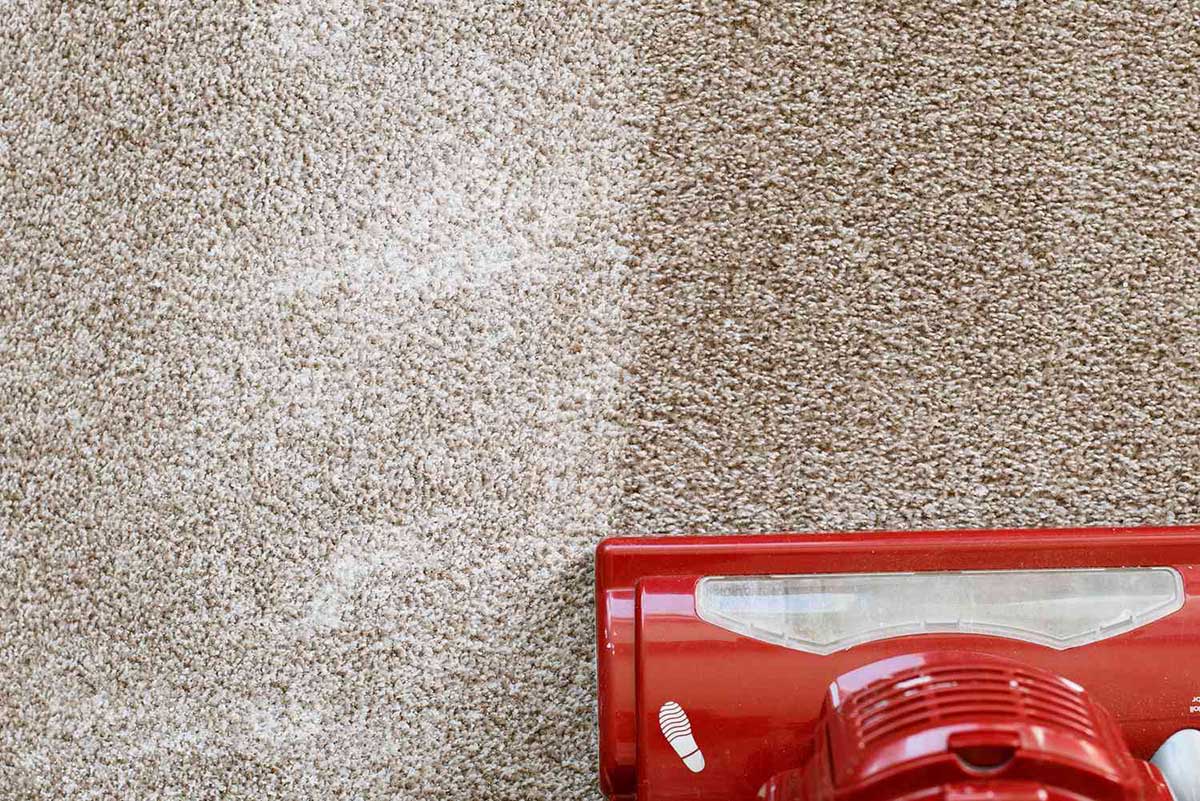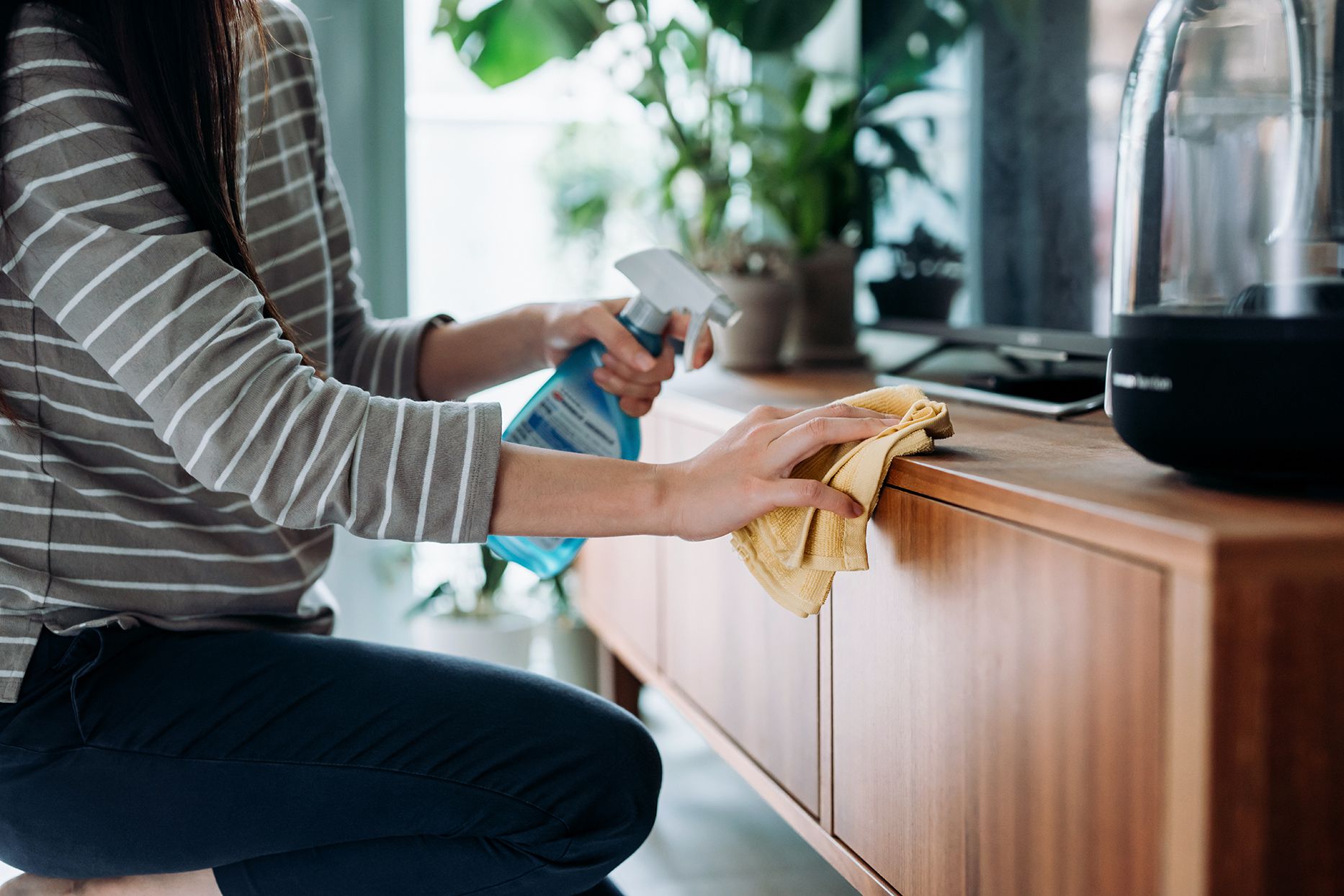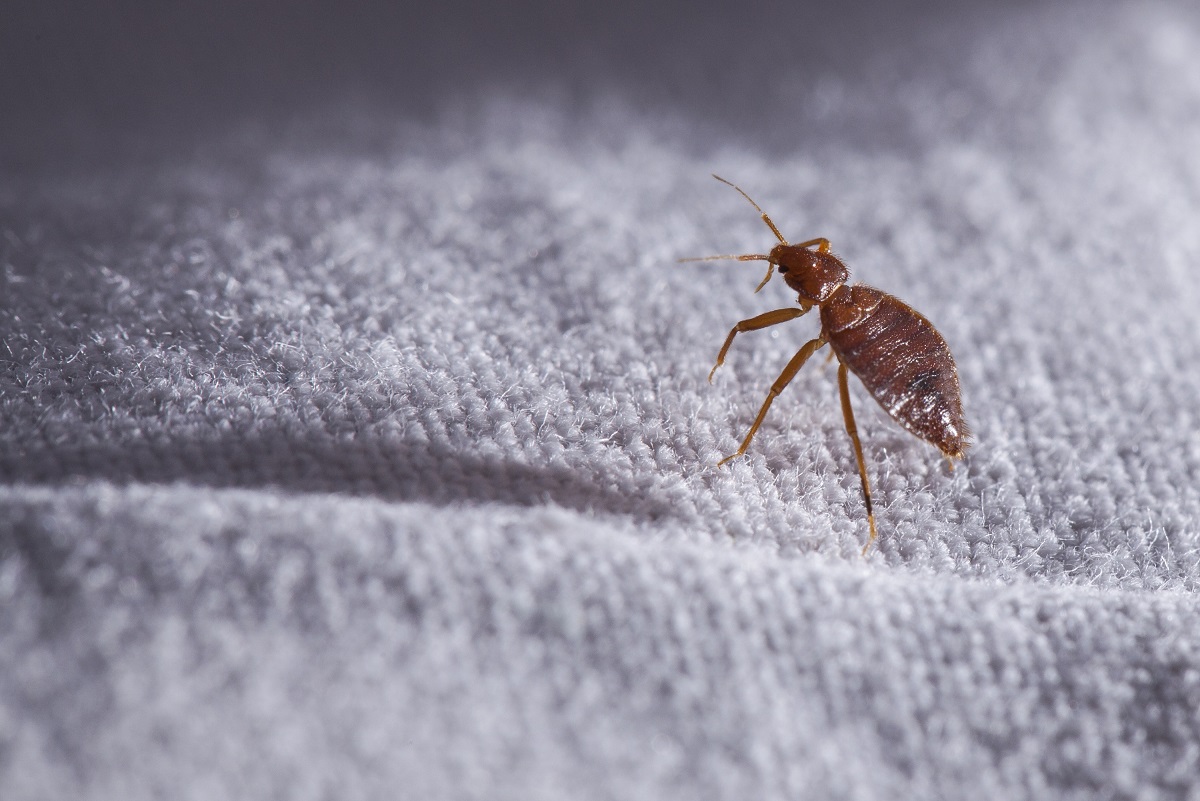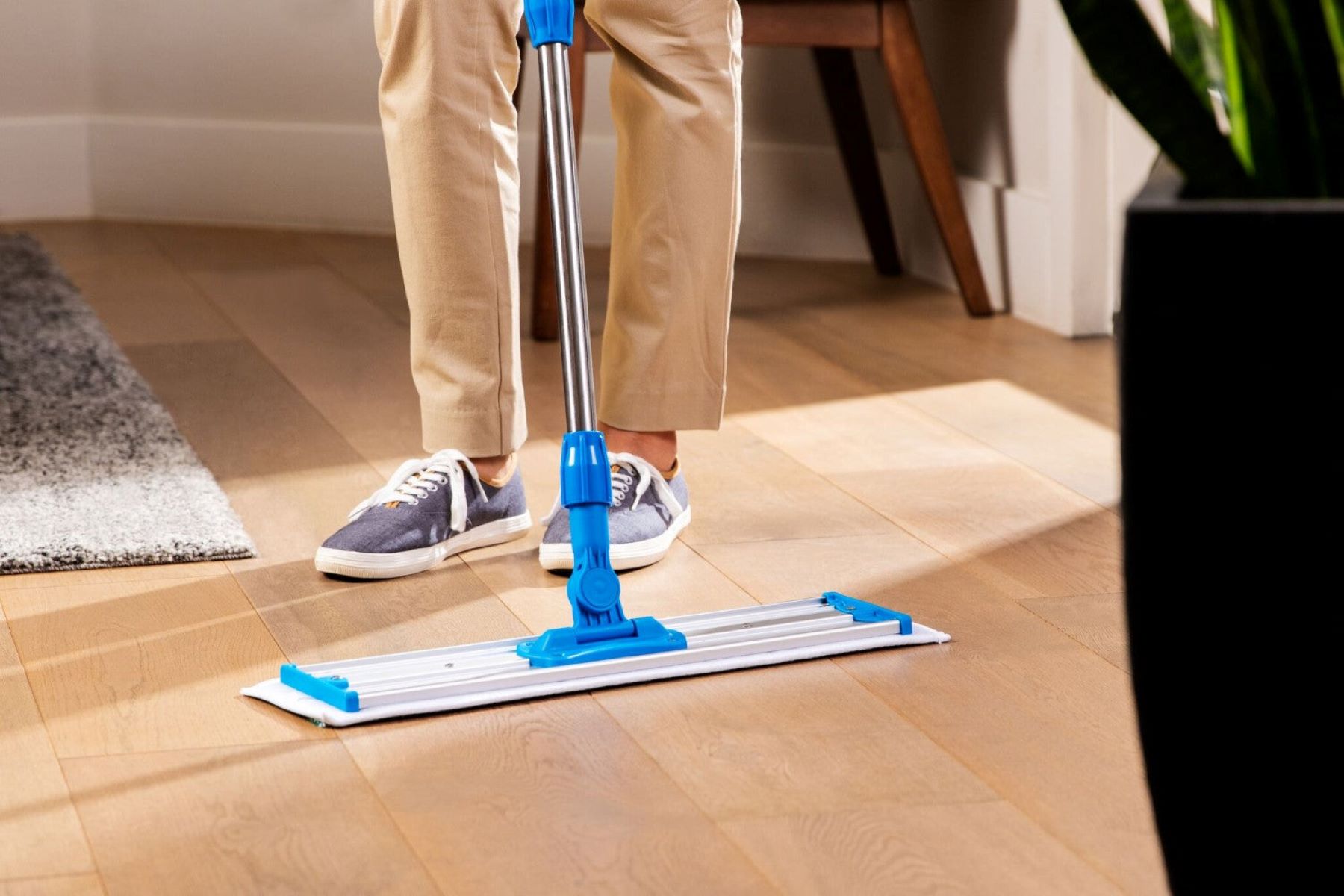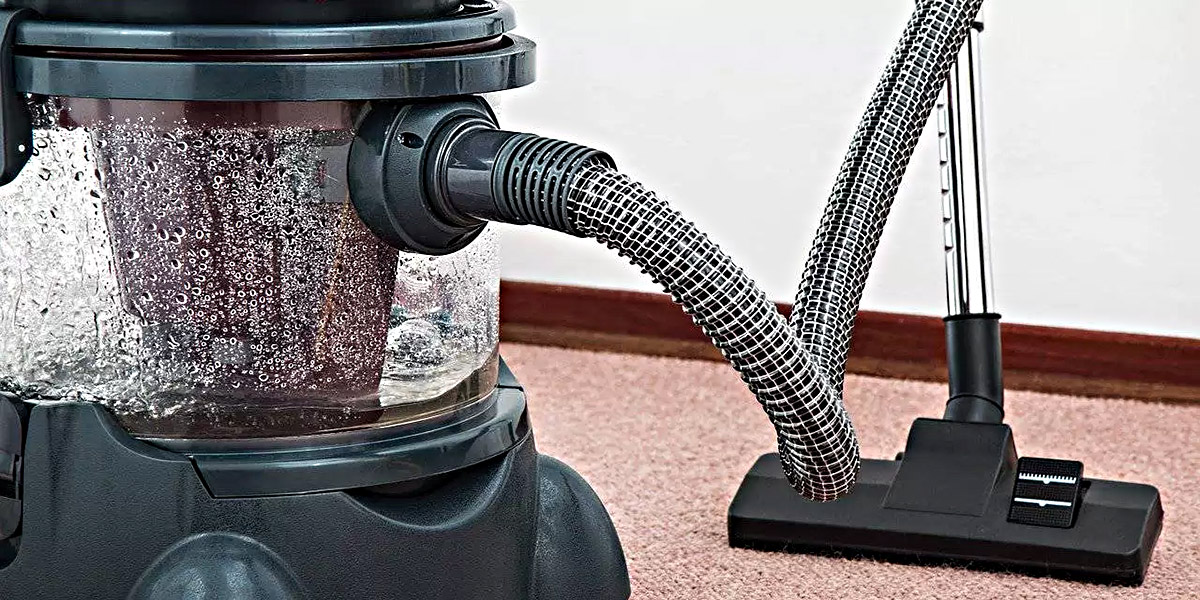

Articles
How To Kill Dust Mites In Carpet
Modified: February 26, 2024
Learn effective ways to eliminate dust mites from your carpet with these informative articles. Say goodbye to allergy triggers and breathe easier at home.
(Many of the links in this article redirect to a specific reviewed product. Your purchase of these products through affiliate links helps to generate commission for Storables.com, at no extra cost. Learn more)
Introduction
Dust mites are microscopic creatures that thrive in warm and humid environments, making our carpets the perfect breeding ground for them. These tiny pests feed on dead skin cells shed by humans and animals, living in the fibers of our carpets and mattresses. While they are invisible to the naked eye, their presence can lead to a myriad of health issues.
In this article, we will delve into the world of dust mites and explore effective methods to eliminate them from your carpets. By understanding the risks associated with dust mite infestations and adopting preventive measures, you can create a healthier living environment for yourself and your loved ones.
So, if you’re ready to say goodbye to these unwanted guests in your carpets, let’s jump right in!
Key Takeaways:
- Say goodbye to dust mites in your carpets by understanding their risks, identifying signs of infestation, and implementing preventive measures to create a healthier living environment for you and your family.
- Employ effective techniques such as vacuuming, steam cleaning, and natural remedies to eliminate dust mites from your carpets. Consider hiring professional carpet cleaners for thorough and hassle-free dust mite removal.
Read more: What Kills Dust Mites In A Carpet
Understanding Dust Mites
Before we dive into eliminating dust mites from your carpets, it’s important to have a basic understanding of these tiny creatures. Dust mites are microscopic arthropods that belong to the spider family. They measure only about 0.2 to 0.3 millimeters long and have a translucent body. Because of their small size, they are virtually invisible to the naked eye.
Dust mites feast on dead skin cells shed by humans and animals. They thrive in warm and humid environments, making our carpets an ideal habitat for them. These pesky creatures reproduce rapidly, with a single female dust mite laying up to 80 eggs during her lifetime.
Contrary to popular belief, it’s not the dust mites themselves that cause allergies, but rather their waste products. Dust mites produce allergenic proteins in their feces and body fragments, which can trigger allergic reactions in sensitive individuals. These reactions can range from mild symptoms like sneezing and a runny nose to more severe conditions like asthma attacks.
It is estimated that the average carpet can harbor thousands, if not millions, of dust mites. This high population density makes it crucial to take proactive steps to eliminate or minimize their presence in our carpets.
Now that we have a better understanding of dust mites and their impact on our health, let’s explore the potential health risks associated with these tiny creatures in the next section.
Health Risks Associated with Dust Mites
Dust mites may be tiny, but they can pose significant health risks, especially for individuals who are allergic or sensitive to their waste products. Here are some common health issues associated with dust mites:
- Allergic Rhinitis: Dust mite allergens can cause allergic rhinitis, commonly known as hay fever. Symptoms include nasal congestion, sneezing, runny nose, and itchy, watery eyes. These symptoms can greatly impact the quality of life for those affected.
- Asthma: Dust mites can trigger asthma attacks in individuals who have this respiratory condition. The allergenic proteins present in dust mite waste can irritate the airways, leading to coughing, wheezing, shortness of breath, and chest tightness.
- Eczema: Dust mite allergens can worsen symptoms of eczema, a chronic skin condition characterized by dry, itchy, and inflamed skin. Individuals with eczema may experience flare-ups when exposed to dust mite allergens, leading to increased discomfort and skin irritation.
- Sinus Infections: Some individuals may develop sinus infections as a result of prolonged exposure to dust mites. When dust mite allergens are inhaled, they can cause inflammation in the sinuses, leading to congestion, facial pain, and pressure.
- Nighttime coughing: Dust mite allergens can trigger coughing, particularly at night when individuals are lying down. This can disrupt sleep and leave individuals feeling fatigued and irritable during the day.
It’s important to note that not everyone will experience these health issues, and the severity of symptoms can vary from person to person. However, if you or your family members are experiencing persistent allergic reactions or respiratory problems, it is worth considering the possibility of a dust mite infestation in your carpets.
Now that we are familiar with the health risks associated with dust mites, let’s move on to the next section and learn how to identify signs of dust mite infestation in your carpets.
Signs of Dust Mite Infestation in Carpets
Dust mites are microscopic creatures that can easily go unnoticed. However, there are some signs that can indicate a dust mite infestation in your carpets. By being aware of these signs, you can take timely action to eliminate the problem. Here are some signs to watch out for:
- Allergic Reactions: If you or your family members experience frequent allergic reactions, such as sneezing, runny nose, or itchy eyes, that seem to occur predominantly when you’re indoors or in contact with your carpet, it could be a sign of dust mite infestation.
- Increase in Asthma Symptoms: If you or someone in your household has asthma, pay attention to any increase in symptoms like coughing, wheezing, shortness of breath, or chest tightness. Dust mite allergens can worsen asthma and trigger respiratory distress.
- Visible Dust: Look closely at the surface of your carpet. If you notice a layer of fine dust particles or dust accumulation in certain areas, it could indicate a high population of dust mites. These particles are often a mixture of dust mite waste, dead skin cells, and other debris.
- Musty Odor: Dust mites produce waste that can emit a musty odor. If you detect a lingering musty smell in your carpeted areas, especially when the carpet has been undisturbed for some time, it could be a sign of dust mite activity.
- Allergic Reactions Upon Vacuuming: If you experience allergic symptoms such as sneezing or itching after vacuuming your carpets, it may indicate the presence of dust mites. The act of vacuuming can disturb the dust mites and their allergens, triggering a reaction.
If you notice one or more of these signs, it is advisable to take action to eliminate dust mites from your carpets. In the next section, we will discuss preventive measures to reduce the dust mite population and minimize their impact on your health.
Prevention Measures to Reduce Dust Mite Population
Preventing dust mite infestations in your carpets is key to maintaining a healthy living environment. By implementing the following preventive measures, you can greatly reduce the dust mite population and minimize the risk of allergic reactions and respiratory issues:
- Frequent Vacuuming: Regular vacuuming is essential in removing dust mites and their allergens from your carpets. Use a vacuum cleaner equipped with a high-efficiency particulate air (HEPA) filter, as it can effectively trap tiny particles, including dust mite waste. Vacuum your carpets at least once a week, paying special attention to high-traffic areas and upholstery.
- Encase Mattresses and Pillows: Dust mites often thrive in our mattresses and pillows. Consider using allergen-proof covers or encasements to protect your bedding. These covers provide a barrier that prevents dust mites from infiltrating your sleeping area.
- Wash Bedding in Hot Water: Regularly washing your bedding in hot water (at least 130°F or 54°C) can help kill dust mites and remove their allergens. Be sure to wash pillowcases, sheets, and blankets on a weekly basis to maintain cleanliness and minimize dust mite populations.
- Control Humidity Levels: Dust mites thrive in humid environments, so it’s important to keep the humidity in your home under control. Aim for a relative humidity level of around 30-50%. You can use a dehumidifier to reduce moisture in the air, especially in humid climates or during warmer months.
- Regularly Clean and Dust: Dusting surfaces and cleaning your home regularly can help reduce dust accumulation and remove dead skin cells, which are a food source for dust mites. Use a damp cloth or microfiber duster to minimize the spread of allergens while cleaning.
- Minimize Carpeted Areas: Consider minimizing the use of carpeting in your home, especially in bedrooms and living areas. Opt for hard flooring surfaces like wood, tile, or laminate, as they are easier to clean and less likely to harbor dust mites.
By adopting these preventive measures, you can significantly reduce the dust mite population in your carpets and create a healthier living environment. However, if you already have a dust mite infestation, vacuuming alone may not be enough. In the next sections, we will explore effective techniques for eliminating dust mites from your carpets, including steam cleaning and natural remedies.
Vacuum your carpet regularly using a vacuum cleaner with a HEPA filter to effectively remove dust mites and their allergens. Consider steam cleaning your carpet to kill dust mites and their eggs.
Read more: How To Kill Dust Mites In Pillows
Vacuuming Techniques to Eliminate Dust Mites
Vacuuming is an essential step in maintaining a clean and dust mite-free carpet. By employing the right techniques, you can effectively remove dust mites and their allergens from your carpets. Here are some vacuuming techniques to help you eliminate dust mites:
- Choose a Vacuum with HEPA Filter: Select a vacuum cleaner that features a high-efficiency particulate air (HEPA) filter. These filters are designed to trap tiny particles, including dust mite waste. The HEPA filter prevents the allergens from being released back into the air, ensuring a thorough and efficient cleaning process.
- Use the Proper Vacuum Attachments: Different vacuum attachments serve different purposes. For carpets, use a power brush or beater bar attachment that agitates the fibers, dislodging dust mites and allergens from deep within. Additionally, utilize crevice tools and upholstery attachments to clean the edges of the carpet, baseboards, and upholstered furniture, where dust mites often accumulate.
- Vacuum Regularly: Establish a routine of regular vacuuming to prevent dust mite buildup. Aim to vacuum high-traffic areas at least once a week, while less frequently used areas can be vacuumed every two weeks. Consistency is key in keeping dust mite populations under control and maintaining a clean carpet environment.
- Slow and Steady Movement: Vacuum slowly and steadily for optimal results. By moving the vacuum cleaner slowly, you allow it to extract more dust mites and allergens from the carpet fibers. Avoid rushing through the process, especially in heavily soiled or congested areas.
- Overlapping Strokes: To ensure thorough cleaning, use overlapping strokes when vacuuming. This technique helps to cover each area multiple times, ensuring any embedded dust mites and allergens are thoroughly removed. Overlapping strokes also prevent you from missing any spots, leaving your carpets cleaner overall.
- Empty and Clean the Vacuum Properly: Regularly empty and clean the vacuum canister or replace vacuum bags as needed. Dust mites and their allergens can accumulate inside the vacuum, so proper maintenance is crucial to prevent reinfestation. Additionally, clean or replace the vacuum filters according to the manufacturer’s instructions for optimal performance.
Remember, vacuuming alone may not completely eradicate a severe dust mite infestation. In such cases, additional treatments like steam cleaning or natural remedies may be necessary. We will explore these methods in the upcoming sections to help you achieve a dust mite-free carpet.
Steam Cleaning to Kill Dust Mites in Carpets
Steam cleaning is a highly effective method for killing dust mites and removing their allergens from carpets. The high temperature of the steam not only eliminates the dust mites but also helps to sanitize and refresh the carpet fibers. Here’s a step-by-step guide on how to effectively steam clean your carpets:
- Prepare the Steam Cleaner: Begin by filling the steam cleaner with hot water according to the manufacturer’s instructions. Some steam cleaners may require the addition of a cleaning solution, while others operate solely using water.
- Vacuum Thoroughly: Before steam cleaning, vacuum the entire carpet to remove loose debris, dust, and surface dirt. This step helps to ensure that the steam cleaner can focus on deep cleaning and targeting the dust mites residing in the carpet’s fibers.
- Test in an Inconspicuous Area: Before proceeding to clean the entire carpet, test the steam cleaner in a small, inconspicuous area to ensure that it does not cause any damage or discoloration.
- Steam Clean the Carpet: Starting from one corner of the room, slowly steam clean the carpet in overlapping strokes. Pay extra attention to high-traffic areas and spots that may be more prone to dust mite infestation. Make sure to follow the manufacturer’s recommended technique for your specific steam cleaner model.
- Allow Drying Time: After steam cleaning, allow the carpet to dry completely before walking on it or placing any furniture back in the room. Good ventilation, such as opening windows or using fans, can help speed up the drying process.
- Repeat as Necessary: For severe dust mite infestations or heavily soiled carpets, it may be necessary to repeat the steam cleaning process multiple times to achieve the desired results. Regular steam cleaning every few months can also help in maintaining a dust mite-free carpet.
Steam cleaning is an effective method for eliminating dust mites, but it’s important to consider the carpet’s material and the manufacturer’s guidelines. If you’re unsure, it’s advisable to consult professional carpet cleaners who specialize in steam cleaning to ensure the best possible results.
In the next section, we will explore natural remedies that can complement your efforts in controlling dust mites in your carpets.
Natural Remedies for Dust Mite Control
For those who prefer a more natural approach to eliminating dust mites, there are several remedies and practices that can help control their population in your carpets. While natural remedies may not completely eradicate dust mites, they can work in conjunction with other methods to reduce their presence. Here are some natural remedies for dust mite control:
- Essential Oils: Certain essential oils have antimicrobial and dust-repellent properties that can help deter dust mites. Tea tree oil, eucalyptus oil, and lavender oil are among the most commonly used for this purpose. Dilute a few drops of your chosen essential oil with water and spray it lightly on your carpets, focusing on areas prone to dust mite infestation.
- Vinegar: White vinegar is a natural disinfectant that can help kill dust mites. Mix equal parts of vinegar and water in a spray bottle and lightly mist your carpets. Allow it to sit for a few minutes before blotting with a clean cloth. Vinegar also helps remove odors and freshens up your carpets.
- Baking Soda: Baking soda is a versatile natural cleaner that can freshen up your carpets and help eliminate dust mite allergens. Sprinkle a generous amount of baking soda over your carpet and let it sit for a few hours or overnight. Then, vacuum the baking soda thoroughly to remove it along with any trapped dust mites and odors.
- Diatomaceous Earth: Diatomaceous earth is a fine powder made from the fossilized remains of diatoms. It has desiccant properties that can dehydrate and kill dust mites. Sprinkle diatomaceous earth lightly over your carpets and let it sit for a few hours before vacuuming it up. Be sure to use food-grade diatomaceous earth, as some varieties are harmful if ingested or inhaled.
- Freezing: Dust mites cannot survive extreme temperatures. If you have small items like stuffed toys or pillows that can withstand freezing, seal them in a plastic bag and place them in the freezer for 24 hours. This will help kill any dust mites and their eggs. After freezing, allow the items to thaw and then vacuum them to remove any dead dust mites.
- Sunlight: Dust mites thrive in warm and humid environments, so exposing your carpets and other washable items to direct sunlight can help kill them. Hang your carpets or bedding outside on a sunny day and let the sunlight naturally disinfect and freshen them up.
While these natural remedies can be effective in reducing dust mites, they may not eliminate them entirely. It’s important to combine these practices with regular vacuuming, steam cleaning, and other preventive measures to achieve the best results.
If you’re dealing with a severe dust mite infestation or if you prefer professional assistance, consider hiring a reputable carpet cleaning company specialized in eco-friendly or allergy-friendly cleaning methods. They can provide a more thorough and targeted approach to dust mite control.
In the next section, we will discuss the option of hiring professional carpet cleaners for dust mite removal and maintenance.
Hiring Professional Carpet Cleaners for Dust Mite Removal
When it comes to tackling a stubborn dust mite infestation in your carpets, hiring professional carpet cleaners can be a worthwhile investment. Professional cleaners have the knowledge, experience, and specialized equipment to effectively remove dust mites and their allergens, restoring your carpets to a cleaner and healthier state. Here are some reasons why you might consider hiring professional carpet cleaners for dust mite removal:
- Expertise and Experience: Professional carpet cleaners are trained in identifying and dealing with dust mite infestations. They can assess the level of infestation, determine the appropriate cleaning methods, and tailor their approach to suit your specific carpet type and condition.
- Professional-Grade Equipment: Carpet cleaners have access to advanced equipment and cleaning techniques that can provide a more thorough and effective cleaning compared to conventional household vacuums. They may use high-powered vacuums, steam cleaners, or hot water extraction equipment to deep clean your carpets and remove dust mites and their allergens.
- Safe and Effective Cleaning Products: Professional carpet cleaners utilize specialized cleaning products that are safe for both your carpets and your health. These products are formulated to target dust mites and allergens while minimizing any potential harm to you and your family.
- Time and Convenience: Cleaning your carpets yourself can be time-consuming and labor-intensive. By hiring professional carpet cleaners, you can save time and effort while ensuring a thorough and efficient cleaning process. Professional cleaners come equipped with the necessary tools and expertise to get the job done promptly.
- Long-Term Maintenance: Professional cleaners can provide guidance on maintaining a dust mite-free environment and prolonging the cleanliness of your carpets. They may offer recommendations on proper vacuuming techniques, preventive measures, and future cleaning schedules to keep dust mite populations under control.
When hiring professional carpet cleaners, be sure to choose a reputable company that specializes in allergy-friendly or dust mite removal services. Look for certifications, customer reviews, and ask about their cleaning methods to ensure they align with your requirements and preferences.
Remember, professional cleaning can be beneficial for severe dust mite infestations or for those who prefer a comprehensive and hassle-free approach. However, it’s important to complement professional cleaning with regular maintenance and preventive measures to maintain a dust mite-free environment in the long run.
Now that we have explored various methods to eliminate dust mites from your carpets, let’s conclude our discussion in the next section.
Read more: How To Clean Dust Mites From A Mattress
Conclusion
Dust mites may be small, but their impact on our health can be significant. These microscopic pests can cause allergic reactions, trigger asthma attacks, and contribute to other respiratory issues. Taking proactive steps to eliminate dust mites from our carpets is essential for creating a healthier living environment.
In this article, we have covered various aspects of dust mite control in carpets. We started by understanding the nature of dust mites and the risks they pose to our health. We then explored the signs of dust mite infestation in carpets and learned about preventive measures to reduce their population.
We discussed the importance of regular vacuuming and provided techniques to effectively remove dust mites from carpets. Additionally, we explored the benefits of steam cleaning as a powerful method to kill dust mites and sanitize carpets. We also discussed natural remedies that can complement your efforts in controlling dust mites, including the use of essential oils, vinegar, baking soda, diatomaceous earth, freezing, and sunlight exposure.
Lastly, we highlighted the option of hiring professional carpet cleaners specialized in dust mite removal. Professional cleaners bring expertise, professional-grade equipment, and safe cleaning products to effectively eliminate dust mites and provide long-term maintenance solutions.
By implementing these strategies, you can significantly reduce the dust mite population in your carpets, alleviate allergy symptoms, and create a cleaner and healthier living space.
Remember, consistency is key in dust mite control. Regular maintenance, preventive measures, and periodic deep cleaning are crucial to keep dust mite populations at bay. Additionally, maintaining proper humidity levels, minimizing carpeted areas, and practicing good hygiene habits can further contribute to a dust mite-free environment.
Now, armed with knowledge and practical solutions, you can take action to eliminate dust mites from your carpets and enjoy a cleaner and healthier home for you and your loved ones.
Frequently Asked Questions about How To Kill Dust Mites In Carpet
Was this page helpful?
At Storables.com, we guarantee accurate and reliable information. Our content, validated by Expert Board Contributors, is crafted following stringent Editorial Policies. We're committed to providing you with well-researched, expert-backed insights for all your informational needs.
